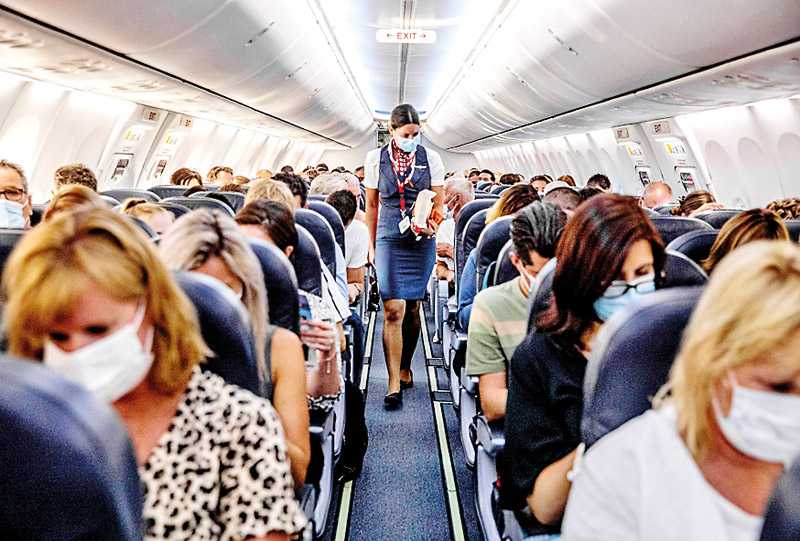Friday Dec 05, 2025
Friday Dec 05, 2025
Monday, 26 October 2020 00:25 - - {{hitsCtrl.values.hits}}

IATA has welcomed the test results by the United States Transportation Command (US Transcom) that confirm the low risk of COVID-19 transmission onboard an aircraft.
The US Transcom testing, which was conducted in August, found that “the overall exposure risk from aerosolised pathogens, like coronavirus, is very low” on the types of airline aircraft typically contracted to move Department of Defence (DOD) personnel and their families, US Transcom stated.
Over 300 aerosol releases, simulating a passenger infected with COVID-19, were performed over eight days using United Airlines Boeing 767-300 and 777-200 twin-aisle aircraft.
Mannequins with and without face masks sat in various seats on the aircraft while fluorescent tracer particles were released at intervals of two seconds to simulate breathing for a minute during ground and in-flight tests. Real-time fluorescent particle sensors were placed throughout the aircraft at the breathing zone of passengers to measure concentration over time. The test revealed that the released aerosol was rapidly diluted by the high air exchange rates observed in the airframes. The time the aerosol tracer particles remained detectable within the cabin averaged less than six minutes.
“While the tests did have some limitations, specifically it only considered a single infected passenger and did not attempt to gather data reflecting passenger movement about the cabin, the results are encouraging,” said Cmdr. Joe Pope, USTRANSCOM operations directorate liaison for the testing. “For both the 777 and 767 airframes, the calculations show about 54 flight hours are required for cumulative inhalation of an assumed infectious dose. This data will help us develop strategies for cabin loading and seating configurations to mitigate potential risk of person-to-person transmission of the aerosol particles.”
One of the initial responses to the Coronavirus by the DOD was to stop or limit travel including via air. In May, the travel ban was lifted for military members, but this came with new restrictions to prevent the spread of COVID-19 while traveling.
Military members and families are still required to participate in a restriction of movement prior to departure, to wear a mask the entire flight, and quarantine upon arrival depending on their final destination. Airlines are also sanitising surfaces routinely.
Even with these prevention methods, a small number of travellers arrive at their destination testing positive for the virus.
There has been little clear evidence to date to show if the infections were contracted while aboard flights, or not.
The August test included multiple series of microreleases of aerosol tracer particles simulating a COVID-19 infected passenger with and without a mask on. The masks used during testing were standard pleated three-ply surgical masks.
The test used more than 40 Instantaneous Biological Analyser and Collector (IBAC) sensors that detected aerosol concentrations at passenger breathing zones in different sections of the airframes. DNA tagged aerosol tests were also performed along with surface sample collections from high-touch areas like arm rests and seat backs.
“Last week, IATA reported that since the start of 2020 there have been 44 cases of COVID-19 reported in which transmission is thought to have been associated with a flight journey, out of 1.2 billion passenger journeys in 2020,” said IATA Director General and CEO Alexandre de Juniac.
“The US Transcom research provides further evidence that the risk of infection onboard an aircraft appears to be very low, and certainly lower than many other indoor environments.”
The testing was conducted in partnership with Boeing and United Airlines, as well as the Defence Advanced Research Projects Agency (DARPA), Zeteo Tech, S3i and the University of Nebraska’s National Strategic Research Institute.